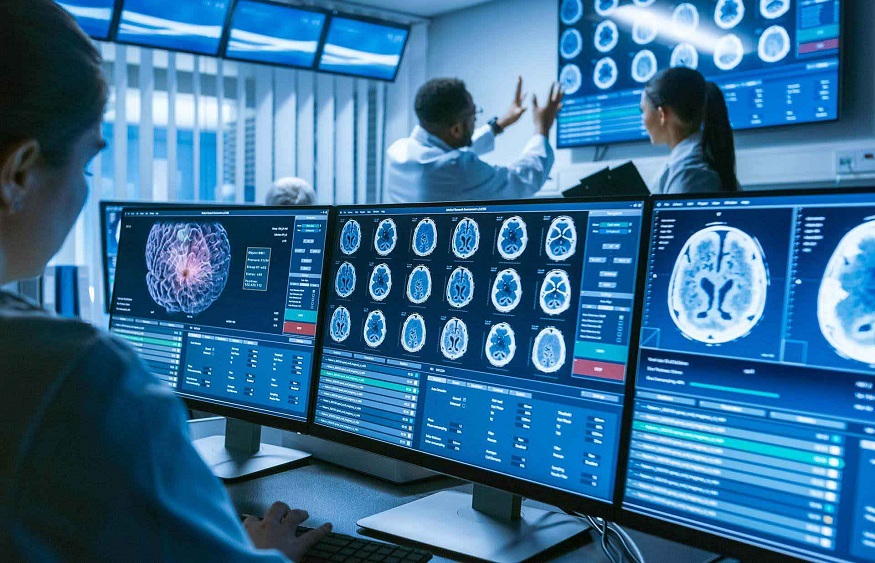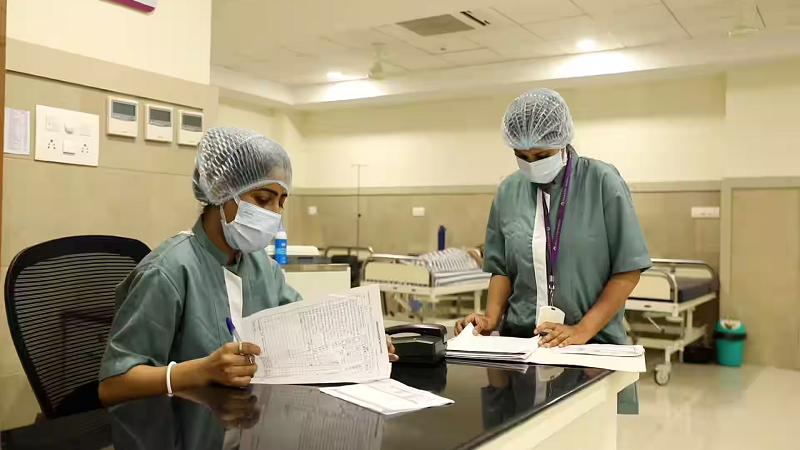Exploring the Power of Medical Imaging Analysis: Enhancing Diagnostic Capabilities

Enhancing medical diagnostic capacities requires analysis of medical imaging. It entails using cutting-edge tools and algorithms to analyze and extract crucial information from various medical imaging modalities. Healthcare workers may improve diagnosis, create efficient treatment plans, and track the development of diseases by utilizing the capabilities of medical imaging analysis. The significance of medical imaging analysis and how it improves diagnostic capacities will be covered in this article.
Analysis of medical imaging development
In diagnostic imaging analysis, there have been substantial improvements throughout time. Medical images were first only evaluated visually by radiologists. However, the field of study rapidly expanded as digital photography and computer tools developed. In order to provide more accurate and reliable diagnoses, modern algorithms and machine learning techniques extract critical information from medical images.
Accuracy and effectiveness are rising.
The medical imaging analysis is essential for increasing the precision and effectiveness of diagnoses. Advanced algorithms allow it to detect minute anomalies and early-stage diseases that might not be immediately visible to the human eye. These algorithms support medical practitioners’ decision-making by seeing patterns, quantifying measurements, and comparing results to benchmarks.
Early identification and action
Analysis of medical imaging can help with early detection and action, which is one of its key benefits. Medical image analysis can spot possible problems even before they manifest as symptoms. This early diagnosis improves patient outcomes by allowing doctors to act quickly and stop the spread of diseases.
The Customization of Treatment Plans
Analysis of medical images helps diagnose and create specialized treatment programs. Healthcare practitioners can learn vital information about the types and scope of diseases by studying medical photographs. Using this information, they can choose the best course of treatment, whether it be surgery, radiation therapy, or medication. Thus, medical imaging analysis supports the provision of individualized and efficient drugs, enhancing patient care.
Tracking a disease’s progression
Medical imaging analysis is essential for tracking the development of diseases in addition to helping with diagnosis and treatment. Sequential imaging allows medical professionals to monitor changes in the patient’s condition and evaluate the effectiveness of therapies. They enable speedy alteration of treatment plans and aid in determining the long-term effects of medical interventions.
The Role of medical imaging analysis in improving visualization
It is essential for diagnosing and characterizing illnesses to visualize internal structures using medical imaging studies accurately. Medical imaging analysis enables healthcare professionals to perform thorough evaluations and make accurate diagnoses using cutting-edge imaging techniques, including computed tomography (CT), magnetic resonance imaging (MRI), and ultrasound.
Detailed Visualization for Characterization and Detection: Advanced algorithms are used in medical imaging analysis to analyze and interpret images acquired from multiple modalities.
Imaging using computed tomography (CT):
CT imaging requires many X-ray images to be taken from various angles to create cross-sectional images of the body. Because they can see into structures with fantastic clarity, healthcare professionals can identify and classify illnesses by analyzing these images. By producing these pictures and offering thorough insights into the anatomical components, medical imaging analysis improves CT. It helps in the identification of bone fractures, the discovery of tumors, and the evaluation of the seriousness of illnesses or injuries.
Using strong magnets and radio waves, magnetic resonance imaging (MRI) creates precise images of the body’s soft tissues. By employing photo data to provide detailed visualizations, medical imaging analysis improves MRI. Brain tumors, spinal cord injuries, and musculoskeletal diseases are easier to diagnose.
Ultrasound imaging:
The ultrasound imaging creates real-time images of organs and tissues using high-frequency sound waves. To improve ultrasonography, medical imaging analysis techniques increase picture quality, lower noise, and offer additional visualizations. It helps with fetal development evaluation, cardiovascular disease identification, and minimally invasive procedure guidance.
Using modality
Because medical analysis is easy to integrate, medical professionals can take advantage of the combined potential of numerous imaging modalities for precise diagnosis. A thorough evaluation of the patient’s condition can be achieved by combining the benefits of each modality and using the capabilities of medical imaging analysis algorithms.
Multi-Modality Fusion:
The Medical imaging analysis can produce a complete picture of the patient’s anatomy by fusing prints from many modalities. By merging the anatomical data from CT with the functional data from MRI, for instance, the fusion of CT and MRI images can help evaluate brain tumors.
Multi-Modality Integration:
When medical imaging analysis is combined with several imaging modalities, the diagnostic power of healthcare practitioners is increased. Medical imaging analysis thoroughly assesses a patient’s status by merging data from CT, MRI, and ultrasound studies. For instance, a multidisciplinary approach in oncology integrating various imaging modalities and medical imaging analysis enables more precise tumor staging, therapy response assessment, and disease progression evaluation. The sensitivity and specificity of diagnostic findings are increased through the integration of modalities, which results in better patient care.
Advanced Technology and Infrastructure:
The secure and HIPAA-compliant systems ensure the confidentiality and privacy of patient data. They utilize advanced picture archiving and communication systems (PACS) and reporting platforms to efficiently handle and manage medical images and reports. This technological foundation allows for seamless integration with healthcare systems and facilitates easy access to reports for healthcare providers.
Picture Enhancement and Reconstruction:
Algorithms for medical analysis can boost contrast, enhance picture quality, and lessen artifacts in medical images. These algorithms optimize the visual depiction of anatomical components using noise reduction, picture filtering, and image reconstruction. The imaging analysis algorithms lead to a clearer visualization and more precise interpretation of medical images by improving image quality. In difficult situations, such as imaging obese individuals or patients with metal implants, this feature is handy.
Conclusion
With improved internal structural visualization made possible by medical imaging analysis, healthcare personnel can better identify and classify anomalies. The best medical imaging analysis offers thorough evaluations and precise diagnoses by merging cutting-edge imaging techniques. The diagnostic abilities of healthcare professionals are enhanced by combining several imaging modalities, quantitative analysis, and image enhancement techniques, which eventually result in better patient care. The impact of imaging analysis on visualization and diagnostic precision will continue to change the face of modern medicine as it develops.






